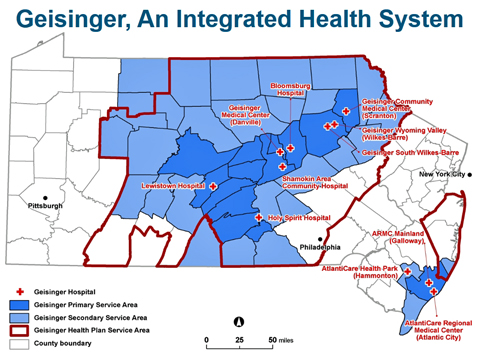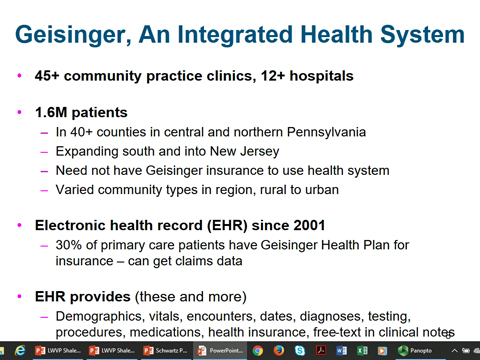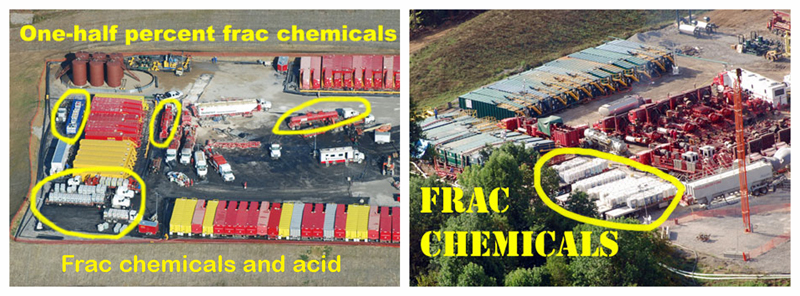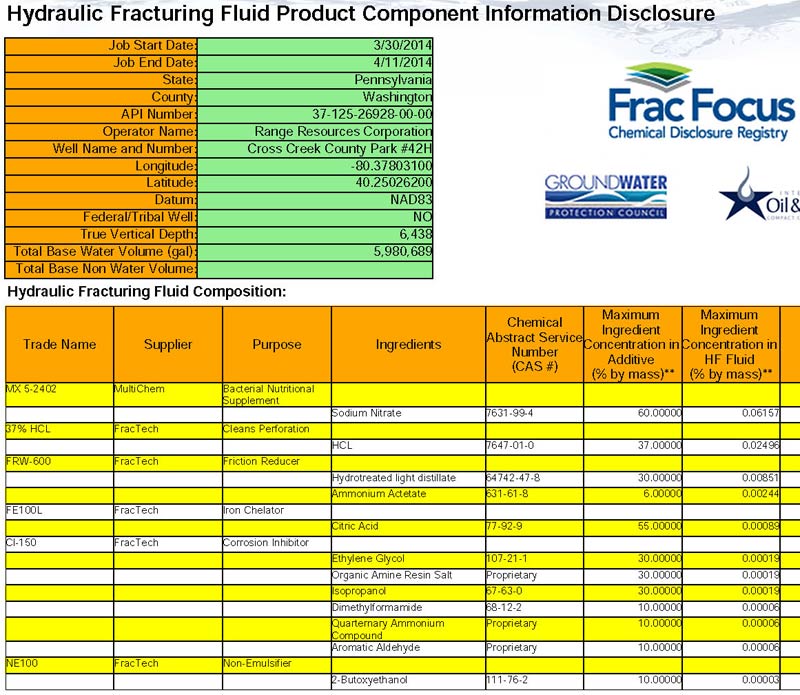REALITY: “Proprietary” frac chemicals remain secret.
But what about the BIGGER picture?
DEP To Require Unconventional Shale Gas Operators to Disclose Chemicals Used in Drilling, Fracking Operations Earlier in the Well Drilling Process Thru PPC Emergency Plan Changes
By David E. Hess | PA Environment Digest | January 26, 2024
On January 26, the Department of Environmental Protection announced it is implementing new policies that will require unconventional shale gas operators to publicly disclose chemicals they use in drilling and hydraulic fracturing earlier in the well development process through changes to their site-specific Preparedness, Prevention and Contingency (PPC) Plans.
Conventional oil and gas well operators are not covered by this new requirement even though they routinely frack their wells.
The announcement said, this “is a next step in the Shapiro Administration’s continuing work to address climate change and protect Pennsylvanians’ Constitutional right to clean air and pure water while maintaining our Commonwealth’s legacy as a national energy leader.”

While producers often list frac chemicals as being a very small percentage of what goes downhole while fracking, the actual amounts of frac chemicals and acid that are used, still result in huge volumes. Many frac chemicals are endocrine disruptors, and their exact identity (CAS number needs to be listed: “Chemical Abstract Service Number“) often remains hidden due to a “Proprietary” classification (“trade secret and confidentiality protections”).
In implementing this requirement, the Shapiro Administration is also following through on a key recommendation of the 43rd Statewide Grand Jury Report, which Gov. Shapiro oversaw as Attorney General. Read more here.
“As Attorney General and now as Governor, I have listened to Pennsylvanians concerned about their health and safety – and I am delivering on the promise I made to them to secure these protections,” said Gov. Josh Shapiro.
Indisputable health data
Presentations at Shale & Public Health Conferences in Pittsburgh, PA by Brian S. Schwartz, MD, MS from Geisinger Health Systems:
2015 Presentation – New Reasearch on Public Health Considerations
Results from studies using detailed Pennsylvania health data
2016 Presentation – Shale gas development & health
Update on studies of the Geisinger Environmental Health Institute
2017 Presentation – Shale Gas Development & Health: Research Updates
Includes information on a heart failure study










“My Administration is setting a new standard for Pennsylvania natural gas to be produced in a responsible, sustainable way and showing how we can bring people together to get things done. We’re going to follow through on our commitment to ensure the health and safety of our communities while maintaining Pennsylvania’s proud energy legacy and our Commonwealth’s critical role in the nation’s energy economy.”
Back to reality…

Since Wilma Subra presented these slides at the Shale & Public Health Conference in Pittsburgh, PA, the volume of liquids used for fracking one well in western Pennsylvania has greatly increased, as longer well horizontals are being drilled, with more ‘stages’ fracked.
VIDEO: 2015 Presentation: Toxic Exposure Associated With Shale Development
Some well horizontal or lateral portions now extend about 3-miles or 4.8 kilometers horizontally, after being drilled down vertically about 1.3 miles or 2.1 kilometers, yielding a total well “depth” of about 4.3 miles or 6.9 kilometers. Around 20-million gallons of liquids have been used to frac some of these longer well horizontals.

Industry representatives sometimes attempt to minimize the volume of frac chemicals used by presenting them as percentages instead of actual gallons, tons or liters. “One-half percent” has often been used in their western Pennsylvania presentations. But what’s half-a-percent of 20-million gallons?

Somewhere around 1/4th to 1/3rd of the frac liquids that go downhole into a well bore return to the surface as flowback or produced “water.” These sorts of liquids now contain additional toxic elements from the shale layer that are extremely salty (“brine”) and typically contain heavy metals and radium 226 and 228. Some of that radioactivity has a half-life of 1,600 years. Justin Nobel’s book is due to be published in Spring 2024:

An acclaimed science journalist’s extraordinary seven-year investigation into how the U.S. oil and gas industry has avoided environmental regulations and created a dangerous and radioactive public health crisis. More:
Petroleum-238: Big Oil’s Dangerous Secret and the Grassroots Fight to Stop It
Justin Nobel testimony for Waste Loophole Policy Hearing – Sep 28, 2021
VIDEO: 2019 Presentation at the Shale & Public Health Conference
“Reporting on Radioactivity in Oil & Gas Development”
More about radioactive waste:
TENORM: Stories on Fracking’s Radioactive Waste
Downstream Radioactivity: What on Earth Is Coming Out of the Pipes?
In West Virginia, Plan to Clean up Radioactive Fracking Waste Ends in Monster Lawsuit
More Specifics
DEP regulations now require well operators to prepare and develop a site-specific Preparedness, Prevention and Contingency (PPC) plan prior to storing, using, or generating regulated substances on a well site.
[DEP has two guidance documents for preparing emergency and PPC plans for oil and gas facilities– Guidelines for the Development and Implementation of Oil & Gas Well Site Integrated Contingency Plans for Unconventional Well Sites– DEP 800-2200-001 — issued in July 2023 and Guidelines for the Development and Implementation of Environmental Emergency Response Plans– DEP 400-2200-001— issued in April 2001 with minor changes in 2005.]
The PPC plan generally requires disclosure of “regulated substances,” as defined in 25 Pa. Code § 78a.1.
[The existing Integrated Contingency Plans policy requires operators to “Identify and list by common chemical name and trade name, the locations, sources and quantities of chemicals and wastes (residual waste and regulated substances, including top hole water, brines, drilling fluids, additives, drilling muds, stimulation fluids, well servicing fluids, oil, production fluids and drill cuttings from the drilling, alteration, production, plugging) managed at the site.”
[It also provides trade secret and confidentiality protections: “Requests for confidentiality of this information will be handled in accordance with Department regulations.” (page 17)]
Today’s announcement said previously, PPC plans were required to be submitted to DEP only upon request.
[DEP only required the submission of so-called “Quick Sheets” which contained critical information for first responders, contacts, maps of the facilities and other information. DEP 800-2200-001 – page 6]
Now, when issuing permits for new unconventional wells, DEP will require the submission of unconventional well operators’ site-specific PPC plans prior to drilling.
Moving forward, the PPC documents will be posted online by DEP at PA Oil and Gas Mapping website upon receipt.
Operator Notification
To inform unconventional operators of this new process, DEP will include the new request in every cover letter that is attached to issued unconventional well permits as of January 3, 2024.
DEP said it has also notified unconventional operators and industry groups.
PPC plans will be uploaded and made publicly available via the DEP’s Office of Oil & Gas Management’s eSubmission application, which can be accessed through DEP’s Greenport.
Making this information accessible will ensure communities understand the facts about natural gas development, according to the announcement..
DEP said in order to provide a consistent and thorough response, the DEP Office of Oil and Gas Management will conduct the initial reviews of the submitted PPC plans for completeness and compliance with regulations.
DEP will also provide training to unconventional gas well operators to ensure compliance with the regulatory planning requirements.
With this oversight, DEP can ensure that operators are well-prepared to avoid and address spills and releases, which can have public health and safety implications as well as environmental impacts.
“DEP is setting a new standard of transparency for Pennsylvania’s natural gas regulation and policy actions,” said DEP Interim Acting Secretary Jessica Shirley. “Under Governor Shapiro’s leadership, DEP will continue to ensure compliance with Pennsylvania’s environmental laws and regulations that address unconventional well permits. By requiring unconventional gas companies to make their PPC plans publicly available, Pennsylvanians will have a clearer picture of the types of chemicals being used on unconventional well sites earlier in the process.”

So what has really changed? Nothing!
Without providing a CAS number for every frac chemical, it’s still not “full disclosure.” This FracFocus report from 2014 shows how many of these frac chemicals are considered “Proprietary” and that classification will continue to keep them secrets, even under the new regulations.

Other Initiatives
In addition to the disclosure of chemicals used in drilling, Gov. Shapiro has also directed DEP to take action to pursue formal rulemaking and policy changes mirroring the collaboration, including: improved control of methane emissions aligned with the US Environmental Protection Agency’s recently announced performance standards for emission sources in the oil and natural gas sector, stronger drilling waste protections, including inspection of secondary containment, and corrosion protections for gathering lines that transport natural gas.
Click Here for the complete announcement.
Visit DEP’s Office of Oil and Gas Management webpage for more information on how DEP regulates conventional and unconventional oil and gas drilling and infrastructure.
Reaction
PennFuture and Conservation Voters of Pennsylvania released this statement in reaction to this initiative–
“[We] applaud Governor Josh Shapiro for following through with a sensible policy on transparency in drilling and hydraulic fracturing:
“We have long advocated for the disclosure of chemicals used in new wells, but until now, the industry has yet to tell Pennsylvanians what they may be exposed to.
“While this change does not directly benefit the communities affected, it is a step towards transparency for public health officials, medical researchers, and households throughout Pennsylvania.
“This win highlights the fact that the fracking industry will not act responsibly on its own, and that well-informed, health-protective public policies are necessary.
Chemicals Used in Natural Gas Fracturing Operations: Pennsylvania (6-page PDF)